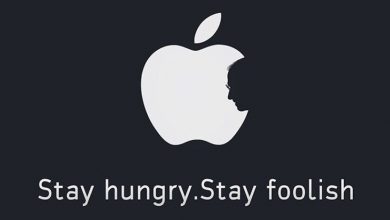Separate the people from the problem
Ways of how to deal with conflicts and disagreements

https://elements.envato.com/bright-green-push-pin-concept-P74UYTX
So, you have a problem within the team. Well, that’s not only good, but it’s needed when there are healthy disagreements. In these following articles, we will talk about some ways of how those conflicts and disagreements can be addressed.
Why did I choose this tool?
It takes years to master the skill of recognizing the conflicts and addressing them. There are many books, models and approaches on how to address conflicts. Having in mind that each conflict has many variables that make it every single time unique, it is better to focus on a few main principles and try to incorporate those in our behaviours. Therefore, this is a rather simplistic description of some of the basics in conflict resolution.
When I run into a big disagreement or I have to facilitate the disagreement between two or more colleagues, one of the first steps to objectively see the problem is to separate the people from the problem. Forget about their roles, positions, background, emotions and objectively and fairly observe the problem and break it down. This tool helps you to focus on the problem rather than on the person/people who disagree.
How does this relate to being a trainer?
As trainers, we often work and interact with a variety of people – participants, coworkers, donors, local authorities or other stakeholders. We often work in fast-paced and unpredictable environments (VUCA – volatile, uncertain, complex, ambiguous). Working in such an environment requires a high level of self-awareness and understanding of the challenges ahead of us. Separating the people from the problem enables us to preserve the working relationship with the person while we address the problem. Many times it happens that, due to the problem ahead of us, we get in an argument or heavy disagreement with the person and therefore our relationship deteriorates. Sometimes the fall out happens after the problem is handled. As trainers, having skills competence will help us to form a good working relationship will all parties and therefore have a much better working environment for everyone.
Why did I choose this tool?
Conflicts and disagreements appear because two or more people have differences in their opinions and fail to agree on how to proceed. This causes a level of distress to everyone involved. Disagreements can be healthy until a certain extent – they provide a much wider variety of approaches, they shed light on perspectives that weren’t considered before and they allow healthy debate wagering which option is better, allowing the process(or natural selection) to go on its way.
However, there are situations where conflicts and disagreements take a much more dramatic turn. The parties insist on their own view of the things, the stakes are high so they don’t come closer to the others’ opinions and the final agreement is nowhere in sight. When emotions get intense, there is pressure because of the high stakes, lack of predictability, or time, and things immediately become much more dramatic.
One of the techniques is to separate the people from the problem. Here are several ways of doing that.
People first.
When you disagree with someone, it is important to keep in mind that you are having a conflict with a human being. Those human beings bring their values, emotions, backgrounds and views of the world inside of the disagreements and it’s important to take them into account. All this can make the disagreement very subjective, overwhelming, or more dramatic than it is. Knowing better the people you work with, would help you understand better the disagreement you have with them. A trainer that values the connection with the participants will insist on short team meetings during the training activity, rather than long evening coordination meetings with the trainers’ team. Spending more time with the participants might give an added value to the course, but on another side might decrease the quality of the course because of the lack of coordination. Some people will take the first position, others the second – depending on their working principles, values and beliefs. An environmentalist will insist on leaving a much smaller footprint with the activities, while on the other side might be another trainer who needs to significantly sacrifice the quality of their work and the output and therefore not be prepared for such compromise. So, the tension starts to build. The disagreements will continue to develop in a different direction, depending on how passionate and flexible the colleagues are and what kind of values and beliefs they have.
The balance between two main focuses – outcome and relationship.
Insisting on the positive outcome of the disagreements might lead to worsening the relationship between the people in the team. Which in the end might show that it is not so good to force a positive outcome because the bad atmosphere in the team can produce a lower outcome, than if we were paying more attention that the relationship between the parties was kept good.
On the other hand, being nice and focusing on the relationship between the people, will make people agree on something that they don’t believe in, and it might anyways worsen the relationship between everyone when the time for implementation of the agreement will come. This might also negatively affect the outcomes.
Separating the outcome from the relationship might be the hardest thing to do, if it is a difficult situation. Which one do you value more? The result or the relationship? My approach is to continue working simultaneously on both, even after the agreement is reached. It is also important for both sides to have an understanding of the process.
I give my best to focus on the past without assigning blame or making it personal. I use the past only as a reference, and the solution is focused on the future, coming from both sides, while investing time and energy on improving the relationship. It helps to keep the integrity high of both sides, which allows a mutually acceptable agreement. If any of the sides feel underrated, it might decrease the chance for agreement or it might escalate later, in different ways: with spilling over the team’s atmosphere, with small disagreements being taken very seriously or with non-implementation of the agreement.
Understanding the different perceptions
Putting yourself in their shoes – understanding the perception and the interests of a fellow colleague or a trainer. Maybe he/she wants to prove him/her-self to the rest of the team, therefore he/she pushes for more challenging workshops that are not in the interest of the participants. Maybe they are going through difficult times, so now it’s time to be empathic and be patient since things are not usually like this.
However, it would be a mistake to assume their intentions because of your fears – I fear she/he will push the intensity higher which is not our common goal because she/he wants to prove her/him-self to the team. In this situation, one of the approaches is to be open, share the fears that you have and discuss the perceptions with the other side while paying a lot of attention to the relationship. It will give you more options on how to address the disagreement.
Give a signal of a possible compromise – a clear action to show that you hear the other side. A decision for the part of the program to be changed and be more challenging. This will bring the sides closer to a solution and the defences will decrease. Be dedicated to the process of finding a solution – both sides have to have the opportunity to participate in the creation – the change in the program. If one side feels they are not part of the process, they might not approve it or will silently reject it, even if the change is made according to what they asked for. This will also determent the level of implementation of the agreement.
Face saving – teams of trainers are small, where one person can have the role of a prosecutor, a judge and a jury, so the resolution of the conflict can be perceived from the other side as very arbitrary. In most situations, it is beneficial to explain the choices and reasoning, and to ask the same from the other side, so the other side doesn’t feel like a win-lose situation. Offering reconciliation and working on the relationship is crucial so the other side doesn’t reject the possible solution or influence the future relationship.
Understanding the different emotions
Many times, emotions are more important than the disagreement itself. Try to first understand the emotions, yours and theirs. Why do you feel angry or insecure about the disagreement? Does being worried influence your approach or negotiations? If yes, why and how? Ask yourself why does the other side feels angry, scared, or overwhelmed? What is the reasonable explanation behind their behaviour? They are just people like yourself and understanding their emotions will help you understand their perceptions and decision-making process.
A fellow trainer was reacting intensely on us being late as a team. Being late for 10-15 minutes with finishing the workshop, starting lunch 5-10 minutes late, the break taking a few minutes more. He would react unexpectedly strong in the first few days, not assigning blame to anyone, but actively complaining to the team. We have made some adjustments, and the delays decreased, but on every small delay, he would react more intensely, this time confronting other team members. It made the whole team to have a bad experience and a negative feeling after each meeting. This made him take long walks to decompress and long talks with each one of us individually. Only after the project ended, I learned from him the reason for these intense reactions – he felt pressured and angry because he didn’t have the free time as planned because he needed to work on other assignments and the deadlines were increasing the pressure.
I always look at the person’s emotions with utmost respect and empathy, trying to determent where are the emotional reactions coming from. I also try to create a safe space where expression of emotions is encouraged no reprimand, being honest and open being the key in addressing our disagreements early. If I don’t understand why he/she is behaving in such a way, I will ask him/her.
Pay attention to “core concerns”. For example – each side needs independence and autonomy to make their own choices, to control their own fate and make their own mistakes or successes. Not allowing the other side the opportunity to have their choice in many cases can produce negative emotions regardless of the outcome. Also the importance of affiliations to other organizations or beliefs, status of how they see themselves in society and the roles that people have, might highly influence their emotions. Not considering them, can lead to damaging the relationship, and this often happens when there is a lack of time or increased pressure when there is a large group or team when things are complex.
The importance of identity – regardless if we are talking about the identity of a nation, identity as a parent, as a liberal or religious identity. Both sides should express their emotions and acknowledge them as legitimate. Knowing how the other side feels, will help the other side be more understanding and work on the solution.
There could be a burst of emotions, and that is ok. In some situations, one of the sides could release the emotional pressure, which may result in a variety of behaviours. It is important that the other side remains calm, empathic, and does not respond with escalating the situation even more.
Allow the other side to steam off – disagreements pile up so people´s frustrations build-up, and sometimes it is good to steam them off. If you listen carefully and don’t take things personally, you will hear the most inner fears and challenges that they have, while they release the pressure that has been building.
With my closest team (that I have been working in the past years), we were working at a large conference, preparing a lot of things, so the stakes were high which made a lot of pressure on us. We had two more weeks where people started doubting that we won’t make it on time, regardless if we are working 16h per day till the start. We asked for help, but no one came, having in mind the complexity of the work. This built frustration in everyone, but a hidden one, because no one voiced it out publicly considering the team spirit, mostly talking one-on-one. On one coordination meeting, all the frustrations came out. The people were sharing their fears, their perceptions of the negative atmosphere in the team, where one of the colleagues explicitly steamed off. This allowed everyone to decompress and let all of the burdens off their chest, to take another look at our plan and recalculate everything, to re-plan and openly address all concerns. Although there were harsh words said, and many people took the things personally, we used it to build our team even more and this brought us closer together. We also managed to finish everything on time and to take credit for that success as a team.
Small gestures can make a big difference – bringing a tea or coffee for the fellow trainer or keeping a seat at the dinner table, can be a small token of reconciliation and offered hand. Normally these are techniques that show legitimate care about the other person and improves the relationship and understanding between the two sides.
Understanding the communication patterns
Communication is the main tool to create and resolve a disagreement. Therefore, there are some inappropriate practices that fuel conflict, create misunderstandings and distrust, escalate the problem. Limiting those will be beneficial for the individuals as well as for your team.
Listen actively and acknowledge what is being said – many times our teammates state their concerns and difference of opinions but they are being ignored. Sometimes because we assume what they are going to say, maybe because we have heard it before, because there is not much to be done or there is not such a big priority, you might not have an opinion right away. You might need time to think or there are other factors that you want to consider. This builds up the frustration, lack of connection, lack of care.
There are several approaches to address the situation
- Say that you need more time to think about, and you will get back to them
- Say that you don’t have any particular opinion at the moment – and if you don’t feel prepared to give an answer or make a decision
- Say that you hear them, but it’s not a priority at the moment and that they will have to wait.
- Say that you heard them, that you disagree and elaborate on why.
This will help you have a much better working environment and relieve the pressure that might be mounting. It also shows that you are open to different opinions and you take all the opinions seriously.
Speak to be understood – many times people use an approach like they are having a jury who will decide on the outcome of the disagreement, rather than they have to come to terms with that other person. The common mistakes are that people use very fancy words when they are talking with people with limited understanding of the topic, they are not talking in their native language, they have long and overelaborate answers, they call names and assign offensive words, they talk like the person that they disagree with is not in the room. This happens more often if there are groups who disagree and there are representatives of each side.
Try to speak with simple language, give simple examples, adjust your wording to the needs of the listener, adjust “your level” to them, use a friendly approach and gestures, and be short to be easily understood.
Speak about yourself, not about them – when disagreeing, often people say things like “you are mean” or “you didn’t do the things you said you will do”. To avoid escalation of the conflict and taking defensive approaches, it is better to talk about how you see or experience those behaviours without pointing the finger – “I felt hurt” or “I feel pressure because the plan didn’t get finished on time”. This doesn’t divert the responsibility of the person, because both sides are aware of what happened, just helps to focus on the “unfinished work” rather than on the “reckless person who didn’t keep their word”. It helps preserve the relationship between the two people.
Speak with purpose – say less, tell more. Trainers are people who like to talk a lot, to elaborate a lot, to use all of the things that they learned and books they have read. This sometimes can create more problems than resolving them, because talking a lot means that things are placed in the conversation that could complicate the situation even more. Sometimes when giving feedback to our colleague, we speak long and to illustrate that you give an inappropriate example, this example can be interpreted in many different ways, and instead of narrowing down the discussion, we open one more topic that will cause additional disagreements.
Say less, tell more 😊
Exercises
Identify which of these techniques you find useful and which ones not. Talk to your team and other colleagues and try to find out which ones you use and which ones you don’t.
Make a short reminder with the main points in your notebook and keep it close to you. Next time that you have a disagreement with someone, try to refer to some of these points.
Try to identify, in your last intense disagreements, what were the crucial parts and which parts would you do differently if you had another chance.
Reflection questions
How do I behave when I am in a disagreement with someone?
Do I try to “put myself in their shoes” when I disagree with someone?
Am I actively listening and keeping an open mind while I listen?
Do I talk more than it is needed when I try to resolve a disagreement?
How does the other person feel when he/she thinks there is a small chance of compromise?
How do I feel when the stakes are high and how does it affect my performance?
Do I want to put some difficult disagreement “under the rug” or I want to address it sooner rather than later?




